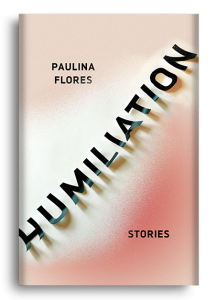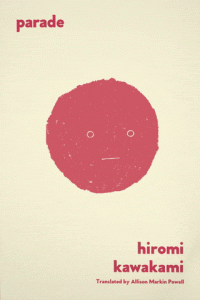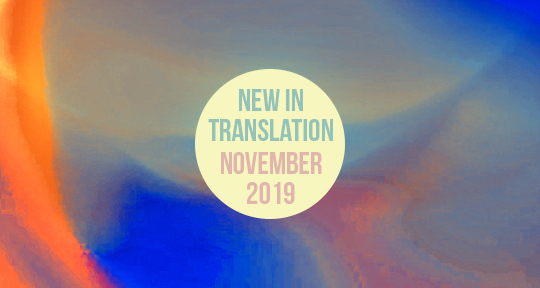November brings plenty of exciting new translations and our writers have chosen four varied, yet equally enriching and timely works: Bohumil Hrabal’s memoir that is at once a detailed study of humans’ relationship with cats and an exploration of dealing with mounting pressures and stress; a debut collection of Chilean short stories which explores social and economic difficulties and sheds light on some of the causes behind Chile’s recent social unrest; Hiromi Kawakami’s follow-up novella to the international bestseller, Strange Weather in Tokyo; and a novel set on the Chagos Archipelago which recounts the expulsion of Chagossians from the island of Diego Garcia and examines cultural identity and exile. Read on to find out more!

All My Cats by Bohumil Hrabal, translated from the Czech by Paul Wilson, New Directions, 2019
Review by Katarzyna Bartoszyńska, Educational Arm Assistant
Bohumil Hrabal’s All My Cats is not for the faint of heart. Though fans of the author will recognize and appreciate the quirky humor and lyrical melancholy, one must also be prepared to take on the harsher aspects of the story, and I suspect that the uninitiated may find the descriptions of cats being murdered a bit much to take. The short memoir documents the author’s relationship to the feral cats living in his country cottage in Kersko, and his anguished labors to brutally limit their number. It is a lovely homage, and a richly evocative account of the pleasures of feline companionship, with lush descriptions of their delicate paws and velvety noses. We become acquainted with each individual kitty and their distinctive markings, habits, and personalities, but these rhapsodic stories are punctuated by episodes of grim slaughter that are depressingly specific—a morose account of an awful deed. And so, gradually, horrifyingly, this becomes a book about guilt and how it shapes one’s worldview, producing a strange reckoning of crime and punishment that reads retribution in the random alignments of events.
Witnessing Hrabal shuttling back and forth between his life in Prague and Kersko, we begin to notice that his concerns about his cats are combined with a steadily accumulating sense of anxiety and torment about his work, neighbors, and life. “What are we going to do with all those cats?” his wife asks, in an echoing refrain, as new litters of kittens, inexorably, arrive. The book is about the cats, but we start to realize that it is also not about the cats, not really, but rather, about how Hrabal struggles to manage the various stresses of his life more generally as he gains success and recognition as a writer. Haunted by his guilt over the murdered creatures, he surveys the world around him, reflecting on the relationship between art and suffering, and increasingly begins to feel that he is a plaything of fate, doomed to unhappiness, with no choice but surrender.
The startling final chapter seems to promise a terrifying clarity—but the epilogue calls it into question once more, offering an ambivalent and complex metaphysics. As with Hrabal’s other works, it is difficult to describe without making it sound far more depressing than it is when you’re actually reading it. Though tinged with sadness, it is a sweet, and often funny story. The writing is wonderfully vivid, particularly in the descriptions of animals and nature, and the artful translation elegantly captures the lightness of Hrabal’s prose. Ultimately, this is a book about what happens when life becomes unsustainable—when pressures and frustrations build, and we cannot find happiness, despite flickering moments of content. But it is also about cats, and what it is like to love them.

Humiliation by Paulina Flores, translated from the Spanish by Megan McDowell, Catapult, 2019
Review by Allison Braden, Editor-at-Large for Argentina
On the eve of a trip to Santiago, my sister loaned me a copy of Paulina Flores’s debut collection of stories, Qué vergüenza. There was a single passage in it, she told me, that summed up the city. Home to a third of Chile’s population, the capital thrums with the restless energy of those seeking a way out—of rural towns, their families, poverty. Last month, that energy combusted when the government announced an increase in public transportation rates. The protests have since grown to encompass larger issues, including privatization and economic inequality, and despite various government promises, the streets are still crowded with Chileans demanding change. Megan McDowell’s English translation of Flores’s book, Humiliation, offers English-language readers a timely glimpse into the deep roots of the discontent.
The collection’s nine stories feature protagonists, often children, who arrive at junctures that test their illusions about the way their family—and the world—works. They emerge from their home jaded and enter the society of adulthood resolved. Shame, the eponymous emotion, unites the stories and suggests a pathos common to Chileans of a class long overlooked in the country’s exported literature. In the southern port city Talcahuano, Flores stumbled across a piece of graffiti: “We laugh at our poverty because our poverty makes us strong” (my translation). That raw sentiment animates the collection, whose standout piece takes place in Talcahuano, where the narrator and his friends train as ninjas for a small-scale heist as his family unravels. Just one of his friends’ dads is employed.
Flores herself left home early and fended off questions from family and friends as she dedicated herself to writing. She attended a workshop with Alejandro Zambra, many of whose works were also translated by McDowell, and the book’s title story went on to win the Roberto Bolaño prize. El País listed the collection in its top ten books of the year. While not all the stories match their perception and subtlety, “Talcahuano” and “Humiliation” are worth the price of admission. Flores is most interested in domestic relationships, but Chile’s trajectory as a country is never altogether absent, and turning points like the Asian Crisis anchor the characters’ economic insecurity in recent history. As Flores illuminates the fragile threads that tie parent to child, or woman to lover, she gently pulls back to reveal that these selfsame threads make up Chile’s social tapestry. (I’ll leave it to you to guess which passage prompted my sister’s recommendation.)
Flores is lucky in her translator. McDowell’s acclaimed skill is on display here; her translation is smart and readable, with a few telltale hallmarks of the original Spanish. There’s a refreshing, neat symmetry in that McDowell and Flores are women contemporaries.
Chile is home to a vanguard of young women writers who, like Zambra, have thrown off the heavy mantle of magical realism—long synonymous with Latin American literature—in favor of spare prose that depicts life as it is. Flores’s stories hinge, for example, on a chance encounter at the library and quiet domestic drama; the magic lies in her ability to freight direct descriptions with emotion, and to interrogate what it means to be Chilean by carefully observing the quotidian without judgment. As her debut effort, Humiliation promises an approach and sensibility that will go far in building a more inclusive Chilean canon. The book’s release couldn’t come at a better time. If you followed Flores’s threads off the page, the tangle would lead to Santiago’s Plaza Italia, where in October more than a million chanted that Chile had awoken.

Parade by Hiromi Kawakami, translated from the Japanese by Allison Markin Powell, Soft Skull Press, 2019
Review by Daljinder Johal, Assistant Managing Editor
The companion to Hiromi Kawakami’s international bestseller, Strange Weather in Tokyo, Parade is a wonderful quick read for a short sitting, but manages to stay in the memory in more ways than one. It’s possible to enjoy Parade as a stand-alone novella, but Kawakami returns to her previous novel’s characters, Tsukiko and Sensei.
On a peaceful summer afternoon, the author immediately plunges us into their world as Sensei asks of Tsukiko: “Tell me a story from long ago.” Complying, Tsukiko’s narration skillfully weaves between the pair and her tale of a childhood memory where two tengu—spirit creatures—appeared to her one day.
Readers familiar with Strange Weather in Tokyo may understand why Tsukiko complies with Sensei’s criticisms—of her habit of touching her earlobe, or not knowing to make somen noodles—before she shares her story. Nevertheless, even newcomers to the Japanese author’s work will quickly become familiar with the two, due to Kawakami’s ability to effectively convey the personality of her characters.
Although the pair’s meal and nap serves to relax the reader for Tsukiko’s tale, culinary tasks such as placing noodles in a bowl highlights the difference in their attitudes; Tsukiko “dumped” the noodles in a bowl, whereas Sensei winds them into smaller clumps. Furthermore, the novella is told from Tsukiko’s point of view, warming us to her even more, while widening the distance to the already impenetrable Sensei.
Under Kawakami’s subtle hand, Tsukiko’s willingness to follow Sensei’s particular instructions lends a sense of believability to the overall story which frames Tsukiko’s more ghost-like tale. Through the novella’s languid pacing and characterization, it seems natural that she would tell this story—revealed to be a personal and mysterious—to Sensei. The author impressively makes effective use of the short novella form to convey a world of detail.
An afterword by Kawakami attempts to further explain the aim of this story. In it, she comments: “The world that exists behind a story is never fully known, not even to the author. That is what I had in mind as I created [Parade]. I hope you have enjoyed reading this memento of a story that has ended.”
Her insight has some influence on our reading of the story, as it most obviously explores memory through Tsukiko’s childhood; in the novella, Tsukiko recalls how a classmate, Yuko, was shunned and how, despite her shame, she participated in the bullying act for self-preservation. Her tengu then goes to connect with Yuko and her plight in some unexpected ways. This embedded tale’s didactic nature lends more of a fable-like element to the book.
Simple and vivid illustrations pepper the story, often using almost basic symbol-like imagery to mirror the events of the plot. The narration is evocative enough, but the illustrations add to the charm in this fairytale-like memory. Regardless of your age, there are moments that elicit childlike joy from the reader. During Tsukiko’s first morning with the “boisterous” tengu as they suddenly appear after her sleep, Tsukiko worries and anticipates her mother’s anger. Instead, Tsukiko’s mother is “perfectly calm as she held the string of her tea bag, swaying it back and forth in her cup,” before acknowledging the tengu’s presence and giving them margarine to lap up and eat. The tension created in moments like these remind us of the predicaments in children’s stories—returning home in time for dinner, keeping your shoes clean, or maintaining popularity with classmates. Almost like the young Tsukiko, we hold our breath for the anger, before releasing it in relief.
Parade, however, does not present one neat answer or message at its end. It’s not a story for children, considering the underlying romantic/sexual tension between Sensei and Tsukiko, or how our female protagonist demonstrates an acceptance with the mysteries of life; for her, Yuko remains as ghost-like and unknowable as Tsukiko’s own tengu. Similarly, in the present-day, Tsukiko laughs to herself, “Sensei would just always be so . . . Sensei” as he takes credit for the idea of this story time.
Kawakami’s afterword highlights this novella as a snapshot or “echo” of how this couple may have spent time together since Strange Weather in Tokyo, as the previous book lacked the space to explore this mystery. Yet Parade simultaneously accepts this inability to explore all facets of a character while existing as a text solely for navigating this exact territory. Still, whatever your stance on this dilemma of authors and readers, Parade remains a highly enjoyable and soothing read that leaves a lingering sentiment for the reader to reflect upon.

Silence of the Chagos by Shenaz Patel, translated from the French by Jeffrey Zuckerman, Restless Books, 2019
Review by Alyea Canada, Assistant Editor
“Memory is a hook digging into your skin. The harder you pull, the more it tears your flesh, the deeper it digs . . . And the scar that grows over it will always be there to remind you of the rawness of this pain . . . Because that’s where your whole life throbs.”
Shenaz Patel’s atmospheric novel explores the plight of the people upon the Chagos, an archipelago in the middle of the Indian Ocean that found itself caught up in geopolitics as a bargaining chip. In an instance of content informing structure, this understated and contemplative work employs nonlinearity and shifting narrators to convey the confusion and helplessness of a people suddenly displaced. The first half of this brief novel follows Charlesia as she learns that she can never return to Diego Garcia, her homeland, after coming to nearby Mauritius to receive medical treatment for her husband. The second half follows Désiré, a man born on the passage between Diego Garcia and Mauritius, as he learns about the history of his people while experiencing discrimination in the present day. This structural choice is effective in that it juxtaposes the mental and physical toll exile has had on Charlesia and Désiré, but is less successful in explaining the actual crisis of Chagossians.
The two chapters set on Diego Garcia are almost idyllic in their rendition of life on the island. Charlesia works on a coconut plantation with everyone else in her community, harvesting and processing the fruit. It is unclear how much personal wealth anyone has, as they are issued base rations from a general store. However, the message is clear: what they lacked in wealth, they made up for in culture. For example, we are shown the deeply interconnected relationships between neighbors as the Chagossians prepare for a sega dance, and when the people of Diego Garcia are given one hour to pack their belongings and evacuate the island, it is clear that the reader is meant to feel this cultural loss more than the loss of their possessions.
At one point Désiré, who has only heard his elders’ descriptions of life in the Chagos, wonders if things were really so idyllic, or if these memories have been colored by decades of exile. It’s a question I found myself asking as well, and one that is not quite satisfactorily answered by the text. The two chapters set on Diego Garcia are short and, as a result, we don’t get a really clear picture of life on the island, nor are we really shown just how difficult life is for the Chagossians in Mauritius. We hear of the discrimination Désiré experiences, but we don’t feel it in the same way we do the exile of Charlesia. The narrative tells more than it shows, with most of the history occurring in flashbacks, either from Raymonde, Désiré’s mother, or Charlesia. While these flashbacks effectively communicate the confusion and violence of the ways in which these characters were ripped from their homelands, the actual history and politics at play aren’t so clear to the uninformed reader. It seems that Patel is so focused on communicating the trauma of the Chagossians that she forgot to fully render its causes.
This is where Silence of the Chagos is failed by its narrative form. Much of the Chagossians’ discrimination and activism occurs off-page. Besides Raymonde wondering why she and her fellow Chagossians complied with the evacuation order, there is little mention of the activist struggle to return to the Chagos. It is not until the final eight pages of the book that Charlesia tells Désiré about the hunger strikes and protests against the denial of their return, and I think this is a real loss for the novel. Scenes of protest and rebellion would have helped round out the story and bring Désiré and Charlesia’s stories together in a more natural way. As written, these last few pages act as an information dump, with Charlesia describing decades of history in a few paragraphs. It is also the first time the major players in the closing of the Chagos are named.
While at times the narrative can feel a bit like a history lesson, Jefferey Zuckerman’s translation is gorgeous and lends a depth to the narrative. He brilliantly renders the ache of nostalgia and mourning that permeates so much of Patel’s narrative. Zuckerman navigates the shifts between the multiple narrators—including a section narrated by a boat—seamlessly without jarring the reader out of the narrative. Almost all of the dialogue is in a creole with only context for translation, and it really helps reinforce the characters’ sense of displacement. As a result, Silence of the Chagos is part historical fiction and part coming-of-age story that best functions as a jumping-off point for learning about the plight of the Chagos.
*****
Read more reviews on the Asymptote blog:

